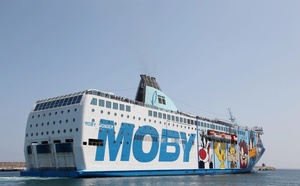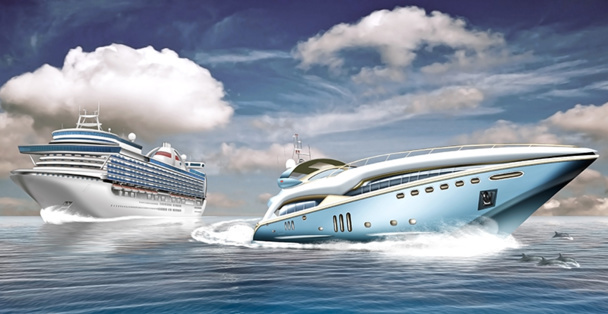
The future’s cruises give rise to some over-the top or bold projects, but no breakthrough concept has really materialized. To this day, all we’ve done is modernize traditional recipes, accordingly to new consumerism habits, nothing more. © fotokalle - Fotolia.com
It was more than 40 years, that Ted Arison, created the United States Carnival Cruises Lines.
Pioneer and builder of the modern cruise, it was he who invented the concept of "Fun Cruises", which is still the mantra of mass cruising operations, that of Carnival’s giant ships and its branch Costa, copied or used by most of the players in this market.
It was also he who, in 1966, created with the Norwegian Knut Kloster, the Norwegian Caribbean Lines, that became Norwegian Cruise Line (NCL).
This visionary entrepreneur had in mind exactly what has become mass cruising today, which dominates the market. And it is he, followed by others, who created it.
In 1984, only 30 years ago, Carnival was the first cruise line to dare invest heavily in television advertising in the United States.
Pioneer and builder of the modern cruise, it was he who invented the concept of "Fun Cruises", which is still the mantra of mass cruising operations, that of Carnival’s giant ships and its branch Costa, copied or used by most of the players in this market.
It was also he who, in 1966, created with the Norwegian Knut Kloster, the Norwegian Caribbean Lines, that became Norwegian Cruise Line (NCL).
This visionary entrepreneur had in mind exactly what has become mass cruising today, which dominates the market. And it is he, followed by others, who created it.
In 1984, only 30 years ago, Carnival was the first cruise line to dare invest heavily in television advertising in the United States.
Old recipes updated to today’s tastes.
Few, perhaps none, now have a vision of this magnitude on what will be the future developments.
The future’s cruises give rise to some over-the top or bold projects, but no breakthrough concept has really materialized.
To this day, old recipes are being recycled to today’s tastes, accordingly to new consumerism habits, nothing more.
To try to predict future trends, let’s look at what currently exists.
In short, there are 6 categories that sometimes overlap.
1) Mass-market cruises, which is the source of the impressive development of this industry.
With vessels that have become virtual floating cities, it offers a particularly successful recipe, if you like cocktails, along with relaxation, entertainment, games, food, dance, party, glitters and glamour, abundance, comfort, service, real or fake luxury, all of that interspersed with stopovers and excursions in a place, or different country every day.
All for an amazingly competitive price considering all of the services provided.
The recipe is a bit "rich", and we end up not always recognizing the taste of each ingredient since there are so many. But it works, it is functional and that makes people want more.
The future’s cruises give rise to some over-the top or bold projects, but no breakthrough concept has really materialized.
To this day, old recipes are being recycled to today’s tastes, accordingly to new consumerism habits, nothing more.
To try to predict future trends, let’s look at what currently exists.
In short, there are 6 categories that sometimes overlap.
1) Mass-market cruises, which is the source of the impressive development of this industry.
With vessels that have become virtual floating cities, it offers a particularly successful recipe, if you like cocktails, along with relaxation, entertainment, games, food, dance, party, glitters and glamour, abundance, comfort, service, real or fake luxury, all of that interspersed with stopovers and excursions in a place, or different country every day.
All for an amazingly competitive price considering all of the services provided.
The recipe is a bit "rich", and we end up not always recognizing the taste of each ingredient since there are so many. But it works, it is functional and that makes people want more.
Cruises for all tastes
2) The “destination” cruise. Found on all types of boats.
It has the characteristic of not considering the stopovers as a component of the offer, but as rather the core of the journey with all other services being purely secondary.
In this category are included the largest around the world cruises such as the most “specific" trips on small boats for polar expedition or legendary routes with ships such as the Hurtigruten.
3)The so-called “classical” Cruises, on older ships, and more intimate .
A slower pace, more attentive service, not necessarily more luxurious, a kind of balance and sweetness between onboard services and discovery of stopover locations and coastal areas, a stronger proximity to navigation: it is closer to the sea, less high, which makes its sensation felt, it's part of the journey, because it is primarily a trip on the ocean.
4) The luxury cruise. We are talking about true luxury, not glitters. It is for a certain milieu, that carries with it its own social status, who feels different from mass-market cruise passengers... because it is, actually.
From the size of the rooms, to luxurious amenities, noble materials, refined cuisine, area to passengers ratio well above all other ships, attentive and personalized service (sometimes nearly one crew personnel per passenger), sometimes individualized excursions off the beaten track and more…
This is Silversea, for example, but also with great finesse, the “Compagnie du Ponant.”
Passengers from mass-market cruises would be bored to death, while those of the luxury cruise would not be able to stand more than a few minutes the activity and (relative) promiscuity prevailing on board of the giants of the seas.
5) Cruises on atypical vessels. Customers who choose a particular type of vessels, either for the intrinsic characteristics of the boat (such as the large ships of Star Clippers), or because such type of company and vessel offers a different way to visit a country (Hurtigruten).
If prices are higher than the mass-market cruises, this category is not necessarily reserved to the wealthier clientele: on board of the two companies that I have mentioned, many passengers materialize a dream for which they have saved for several years.
And style aboard these vessels is perfectly relaxed, but which by no means equates with “neglect.”
6) River cruises. This is one of the cruising formulas that is expanding around the world, where cultural interest is very important.
Because in fact, it is often along rivers that were established cities and civilizations. So the trip might be a bit slow, certainly, but often beautiful, regardless of the category of boats.
Because there are differences between the ships and companies, on the Rhine, in Russia, in China and in Burma: the price differences between different operators are often justified, customers notice it most of the time once onboard.
It has the characteristic of not considering the stopovers as a component of the offer, but as rather the core of the journey with all other services being purely secondary.
In this category are included the largest around the world cruises such as the most “specific" trips on small boats for polar expedition or legendary routes with ships such as the Hurtigruten.
3)The so-called “classical” Cruises, on older ships, and more intimate .
A slower pace, more attentive service, not necessarily more luxurious, a kind of balance and sweetness between onboard services and discovery of stopover locations and coastal areas, a stronger proximity to navigation: it is closer to the sea, less high, which makes its sensation felt, it's part of the journey, because it is primarily a trip on the ocean.
4) The luxury cruise. We are talking about true luxury, not glitters. It is for a certain milieu, that carries with it its own social status, who feels different from mass-market cruise passengers... because it is, actually.
From the size of the rooms, to luxurious amenities, noble materials, refined cuisine, area to passengers ratio well above all other ships, attentive and personalized service (sometimes nearly one crew personnel per passenger), sometimes individualized excursions off the beaten track and more…
This is Silversea, for example, but also with great finesse, the “Compagnie du Ponant.”
Passengers from mass-market cruises would be bored to death, while those of the luxury cruise would not be able to stand more than a few minutes the activity and (relative) promiscuity prevailing on board of the giants of the seas.
5) Cruises on atypical vessels. Customers who choose a particular type of vessels, either for the intrinsic characteristics of the boat (such as the large ships of Star Clippers), or because such type of company and vessel offers a different way to visit a country (Hurtigruten).
If prices are higher than the mass-market cruises, this category is not necessarily reserved to the wealthier clientele: on board of the two companies that I have mentioned, many passengers materialize a dream for which they have saved for several years.
And style aboard these vessels is perfectly relaxed, but which by no means equates with “neglect.”
6) River cruises. This is one of the cruising formulas that is expanding around the world, where cultural interest is very important.
Because in fact, it is often along rivers that were established cities and civilizations. So the trip might be a bit slow, certainly, but often beautiful, regardless of the category of boats.
Because there are differences between the ships and companies, on the Rhine, in Russia, in China and in Burma: the price differences between different operators are often justified, customers notice it most of the time once onboard.
The technology behind a new style of cruising
What’s up for future?
Today's ships are, for quite a few years now, not designed as they once were : before than being boats, they are a marketing concept.
It all starts with market research, projects are drawn up that meet the needs and existing modes of consumption, it is anticipated what will be needed to invent, and around all that, a boat is built.
What will be the future’s cruises? It will be those that have responded to these needs.
It is safe to presume that in the next fifteen years, at least half or more of the "old boats ", those built before 1970, will have disappeared. The older ones are nothing more than souvenirs or problems.
However, there will always be customers, not necessarily rich or posh, who will wish to be in a quieter, more intimate, less agitated in atmosphere in general, aboard small vessels of no more than 400 passengers, offering good comfort, great service, refined food, interesting stops, without requiring entertainment, glitters, nor real or simulated luxury.
The reality and permanence of this customer base should lead some entrepreneurs to seek a formula to build and make financial use of the smaller vessels to organize these types of trips at reasonable prices.
Today, this is almost unthinkable, as operating costs remain too high to achieve a profitable balance. But tomorrow?
Sooner than later, we will find innovative methods of propulsion, new systems of boat management, and other technical or commercial surprises that will reduce costs.
Solutions seem to be more on the side of the technology and science than that of marketing and commercializing.
The rest will follow and I am convinced that this type of cruise will grow considerably once, in 5 or 10 years, new technologies appear.
Today's ships are, for quite a few years now, not designed as they once were : before than being boats, they are a marketing concept.
It all starts with market research, projects are drawn up that meet the needs and existing modes of consumption, it is anticipated what will be needed to invent, and around all that, a boat is built.
What will be the future’s cruises? It will be those that have responded to these needs.
It is safe to presume that in the next fifteen years, at least half or more of the "old boats ", those built before 1970, will have disappeared. The older ones are nothing more than souvenirs or problems.
However, there will always be customers, not necessarily rich or posh, who will wish to be in a quieter, more intimate, less agitated in atmosphere in general, aboard small vessels of no more than 400 passengers, offering good comfort, great service, refined food, interesting stops, without requiring entertainment, glitters, nor real or simulated luxury.
The reality and permanence of this customer base should lead some entrepreneurs to seek a formula to build and make financial use of the smaller vessels to organize these types of trips at reasonable prices.
Today, this is almost unthinkable, as operating costs remain too high to achieve a profitable balance. But tomorrow?
Sooner than later, we will find innovative methods of propulsion, new systems of boat management, and other technical or commercial surprises that will reduce costs.
Solutions seem to be more on the side of the technology and science than that of marketing and commercializing.
The rest will follow and I am convinced that this type of cruise will grow considerably once, in 5 or 10 years, new technologies appear.
What about tourism in the Arctic and Antarctic areas?
The luxury cruise, meanwhile, should quickly and profoundly transform.
Luxury is based on concepts of elitism, a specific milieu, privilege, exclusivity, and rarity. Something that is not easy to achieve on ships of 600 passengers.
Thus, yacht rental is growing dramatically, and some cruise lines using smaller vessels have now adopted this concept (again, Compagnie du Ponant being a pioneer).
We will see more and more ships of 20 to 150 passengers, with high added value, for the most affluent.
But even in this area, the prices will eventually decrease for the reasons stated above, once new technologies are introduced.
The “destination” Cruise for expedition and exploration, still has a bright future ahead of it.
I am talking about the real deal, which, especially in terms of polar areas, is exclusively focused on the landings via Zodiac-type boats, discovering wildlife, the simulation of adventure, the thrill of the unknown, the emotion in front of the virgin nature and the quality of expedition leaders.
For this customer base, the boat type does not matter as long as it is safe and well operated.
It is just a tool, it is the two-horse power necessary and sufficient for the real discovery. There will always be boats suited for this activity.
Yet we need to hope that regulations on tourism in the Arctic and Antarctic areas will not put a halt to everything.
Because the delusional claims of certain companies taking hundreds of passengers on large ships where people do not have the right to land, but can declare they "made it to the Spitsbergen" or Antarctica when, in fact, they have not seen anything at all, are claims that provide the most fundamentalist political ecologists arguments against such expeditions.
Hopefully they will not go as far as prohibiting access to the polar regions, but the risk does exist, even though I hardly believe it will materialize.
Preserving nature is protected it, while making it known, not hidden.
Luxury is based on concepts of elitism, a specific milieu, privilege, exclusivity, and rarity. Something that is not easy to achieve on ships of 600 passengers.
Thus, yacht rental is growing dramatically, and some cruise lines using smaller vessels have now adopted this concept (again, Compagnie du Ponant being a pioneer).
We will see more and more ships of 20 to 150 passengers, with high added value, for the most affluent.
But even in this area, the prices will eventually decrease for the reasons stated above, once new technologies are introduced.
The “destination” Cruise for expedition and exploration, still has a bright future ahead of it.
I am talking about the real deal, which, especially in terms of polar areas, is exclusively focused on the landings via Zodiac-type boats, discovering wildlife, the simulation of adventure, the thrill of the unknown, the emotion in front of the virgin nature and the quality of expedition leaders.
For this customer base, the boat type does not matter as long as it is safe and well operated.
It is just a tool, it is the two-horse power necessary and sufficient for the real discovery. There will always be boats suited for this activity.
Yet we need to hope that regulations on tourism in the Arctic and Antarctic areas will not put a halt to everything.
Because the delusional claims of certain companies taking hundreds of passengers on large ships where people do not have the right to land, but can declare they "made it to the Spitsbergen" or Antarctica when, in fact, they have not seen anything at all, are claims that provide the most fundamentalist political ecologists arguments against such expeditions.
Hopefully they will not go as far as prohibiting access to the polar regions, but the risk does exist, even though I hardly believe it will materialize.
Preserving nature is protected it, while making it known, not hidden.
River tourism has a great future ahead
The river cruises, meanwhile, should continue its development, but certainly with new tools, because river boats are far from having developed as fast as regular cruise ships.
In terms of space, liveability and onboard services, significant progress will take place, making river cruises even more attractive.
Most of today's ships are completely outdated, but already a few new ships, especially in Germany and the United States, are leading the way.
The main innovations will certainly come from Asia, and quickly. As for Russia, the two major river cruise companies seem to have different strategies.
One seems to plan to use its ships until the last draw, while the other seems to invest more seriously in the rehabilitation of the existing fleet and look into new developments.
Still, the river cruises, overall, have a great future ahead of them.
In terms of space, liveability and onboard services, significant progress will take place, making river cruises even more attractive.
Most of today's ships are completely outdated, but already a few new ships, especially in Germany and the United States, are leading the way.
The main innovations will certainly come from Asia, and quickly. As for Russia, the two major river cruise companies seem to have different strategies.
One seems to plan to use its ships until the last draw, while the other seems to invest more seriously in the rehabilitation of the existing fleet and look into new developments.
Still, the river cruises, overall, have a great future ahead of them.
Floating islands projects
And mass-market cruises in all this?
Well they have not finished developing, far from it, and it is probably even sure that it is on that side that we will see the greatest innovations, both technical and conceptual.
The term mass-market cruising is not negative, it is not very pretty but it's the only one that expresses the fact that cruises are actually opening to large numbers, and that is indeed the case.
That said, this is an industry that evolves according to the modes of behavior, and one can certainly predict that glitters, showing off, partying, real or artificial luxury and sometimes cheap rubbish, “sports” gadgets, climbing walls and other surfing or video games will become even more prominent. Because the future market base for these types of cruises is not the same as yours.
It will also be, soon and above all, that of all emerging or liberated countries, in Asia, Africa, South America, Eastern Europe, all these countries where a new middle class is growing at the speed of light that will be the privileged target of the tourism industry in general, and particularly of cruising.
Of course there will be differences, with boats specifically conceived for some markets, as is already the case .
While we’re in the heart of a globalizing world, we still cannot mix everything, and for a while, desires, tastes and eating habits, remain culturally different in countries in Asia, Africa, Europe, and America.
But the common denominators are more powerful, you'll see. There is no turning back.
Finally, we see emerging here and there, and for some years now, some pretty crazy projects of floating islands.
Under this inviting denomination, are hiding giant boats that turn into real cities.
There was the AZ project, named Alstom and Zoppini, an architect, with a creature (you can no longer speak of boat) incredible of 400 meters long, 300 meter wide and 78 meters high, something like a floating residence, a project that lasted a long time.
But also the incredible project "Freedom ship", nearly a kilometer long, 29 meters wide and 107 high, where "passengers" were to live some permanently around the world, with parks, hospitals, schools etc…
I do not believe for a second the sustainability of such projects, and the tens of billions needed for their implementation are not ready to happen.
Well they have not finished developing, far from it, and it is probably even sure that it is on that side that we will see the greatest innovations, both technical and conceptual.
The term mass-market cruising is not negative, it is not very pretty but it's the only one that expresses the fact that cruises are actually opening to large numbers, and that is indeed the case.
That said, this is an industry that evolves according to the modes of behavior, and one can certainly predict that glitters, showing off, partying, real or artificial luxury and sometimes cheap rubbish, “sports” gadgets, climbing walls and other surfing or video games will become even more prominent. Because the future market base for these types of cruises is not the same as yours.
It will also be, soon and above all, that of all emerging or liberated countries, in Asia, Africa, South America, Eastern Europe, all these countries where a new middle class is growing at the speed of light that will be the privileged target of the tourism industry in general, and particularly of cruising.
Of course there will be differences, with boats specifically conceived for some markets, as is already the case .
While we’re in the heart of a globalizing world, we still cannot mix everything, and for a while, desires, tastes and eating habits, remain culturally different in countries in Asia, Africa, Europe, and America.
But the common denominators are more powerful, you'll see. There is no turning back.
Finally, we see emerging here and there, and for some years now, some pretty crazy projects of floating islands.
Under this inviting denomination, are hiding giant boats that turn into real cities.
There was the AZ project, named Alstom and Zoppini, an architect, with a creature (you can no longer speak of boat) incredible of 400 meters long, 300 meter wide and 78 meters high, something like a floating residence, a project that lasted a long time.
But also the incredible project "Freedom ship", nearly a kilometer long, 29 meters wide and 107 high, where "passengers" were to live some permanently around the world, with parks, hospitals, schools etc…
I do not believe for a second the sustainability of such projects, and the tens of billions needed for their implementation are not ready to happen.
In the United States, the "nowhere" cruises are prominent
However, the trend of vessels becoming huge resort centers and nothing else will surely develop, the trend already exists.
In the United States, the "nowhere" cruises are prominent. We board the boats to party, while the ship makes circles in the water, without any stopover, and then returns to its home port.
Why not? And it's still considered a cruise, since the boat moves. But in the end, we wonder why it moves.
And we may well see in the next few years, boats built without motors, ie artificial islands, on similar principles of offshore oil bases.
The problem of propulsion costs would be solved, and "passengers" or "guests" as they say will be offered a week of all-out party "at sea" so to speak.
Not necessarily huge, such "pleasure bases" could one day be added to the range of mass-market cruises.
Cruise lines will be no more than an arm of larger operating groups in the wider field of leisure. But we’re already there!
While I believe that this trend is more than likely, however I do not believe in true giant boats such as the “Freedom Ship” project moving around the world.
Not for technical reasons, because on that side, anything is feasible, but for geopolitical and commercial reasons.
Yet this idea remains a very old dream, or rather a nightmare. It dates from 1895, the year in which a certain Jules Verne, visionary par excellence, published a strange novel entitled "The Floating Island.”
It was exactly that: a motorized floating island! Rich passengers lived on it, they also ended up splitting into two rival groups (Catholics and Protestants !) in the end it was hell and the novel of course finished with the destruction of this so-called "Floating Island.”
Ah, I forgot to mention that Jules Verne had given his novel "The Floating Island" the subtitle: "The ridiculous billionaires."
Thank you Jules Verne!
In the United States, the "nowhere" cruises are prominent. We board the boats to party, while the ship makes circles in the water, without any stopover, and then returns to its home port.
Why not? And it's still considered a cruise, since the boat moves. But in the end, we wonder why it moves.
And we may well see in the next few years, boats built without motors, ie artificial islands, on similar principles of offshore oil bases.
The problem of propulsion costs would be solved, and "passengers" or "guests" as they say will be offered a week of all-out party "at sea" so to speak.
Not necessarily huge, such "pleasure bases" could one day be added to the range of mass-market cruises.
Cruise lines will be no more than an arm of larger operating groups in the wider field of leisure. But we’re already there!
While I believe that this trend is more than likely, however I do not believe in true giant boats such as the “Freedom Ship” project moving around the world.
Not for technical reasons, because on that side, anything is feasible, but for geopolitical and commercial reasons.
Yet this idea remains a very old dream, or rather a nightmare. It dates from 1895, the year in which a certain Jules Verne, visionary par excellence, published a strange novel entitled "The Floating Island.”
It was exactly that: a motorized floating island! Rich passengers lived on it, they also ended up splitting into two rival groups (Catholics and Protestants !) in the end it was hell and the novel of course finished with the destruction of this so-called "Floating Island.”
Ah, I forgot to mention that Jules Verne had given his novel "The Floating Island" the subtitle: "The ridiculous billionaires."
Thank you Jules Verne!

François Weill - DR
François Weill has spent most of his career in the tour operating and cruise tourism. He started a career after studying philosophy in 1974 at American Express and then with Paquet Cruises, before making his own business, Scanditours the first French tour operator specialized in Nordic destinations.
In the late 90s, he sold Scanditours to Kuoni and after a hiatus of a few years as a consultant, journalist, and professor at the University of Marne-la-Vallée, he created the French branch of Hurtigruten which he chaired and managed until 2010 with the success that we know of.
In 2008, King Harald V awarded him the title of Officer of the Royal Order of Merit of Norway for services rendered to the development of this destination on the French market.
President of the AFCC for several years, François Weill has resumed his operations as a consultant.
Contact: fw@francoisweill[
In the late 90s, he sold Scanditours to Kuoni and after a hiatus of a few years as a consultant, journalist, and professor at the University of Marne-la-Vallée, he created the French branch of Hurtigruten which he chaired and managed until 2010 with the success that we know of.
In 2008, King Harald V awarded him the title of Officer of the Royal Order of Merit of Norway for services rendered to the development of this destination on the French market.
President of the AFCC for several years, François Weill has resumed his operations as a consultant.
Contact: fw@francoisweill[






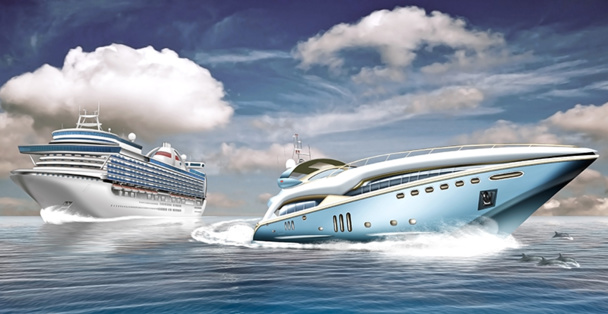



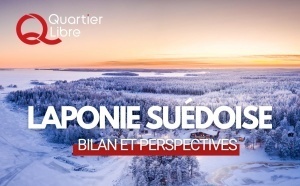

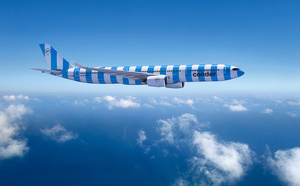


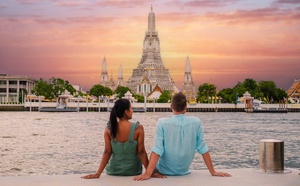
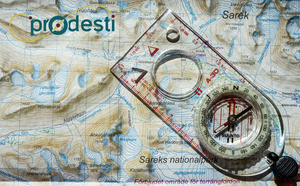





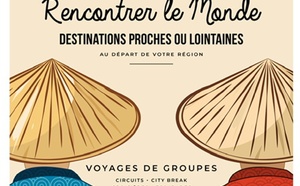
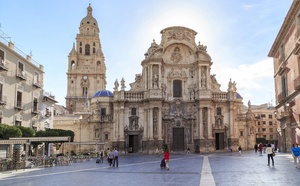
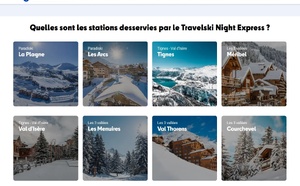

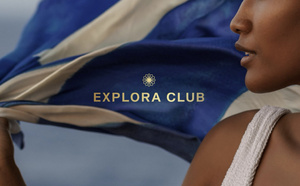

![Tourisme : où sont passés les Chinois ? [ABO] Tourisme : où sont passés les Chinois ? [ABO]](https://www.tourmag.com/photo/art/large_16_9/87929923-62307593.jpg?v=1744721842)

